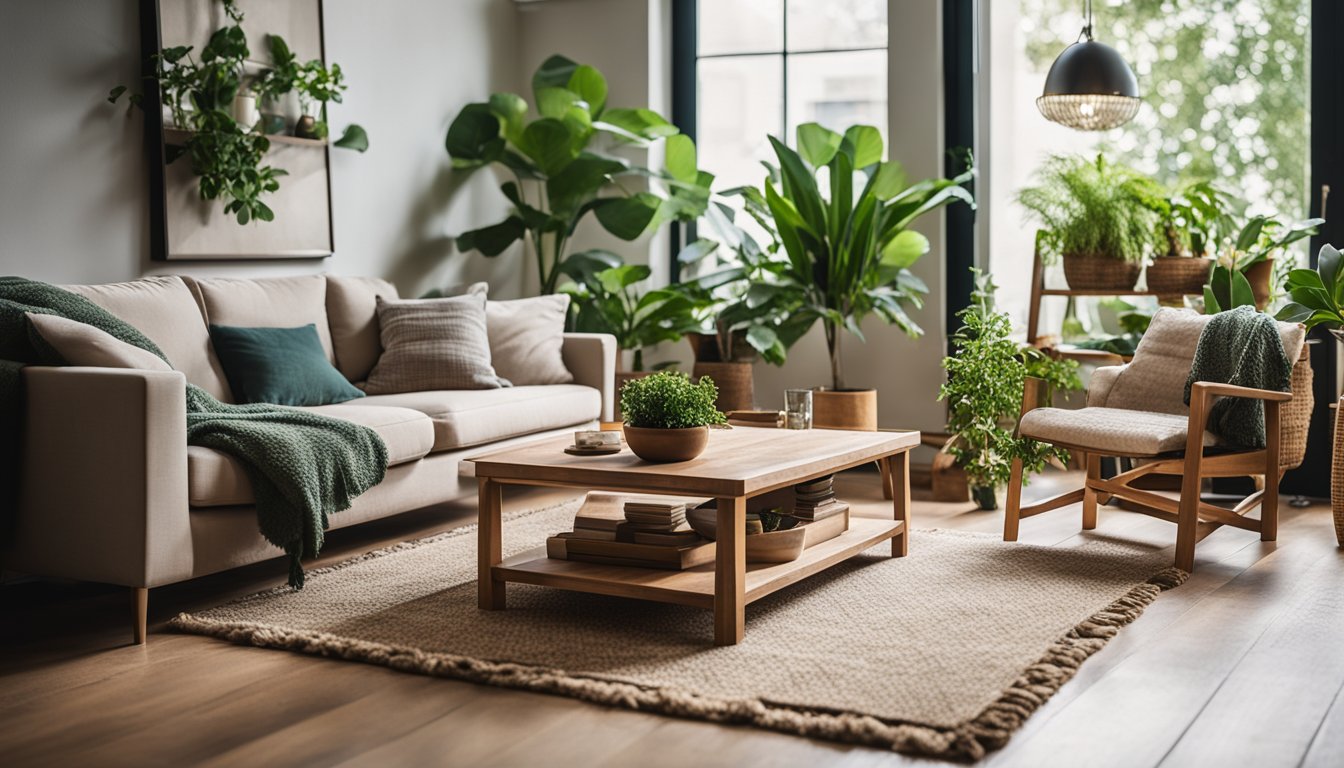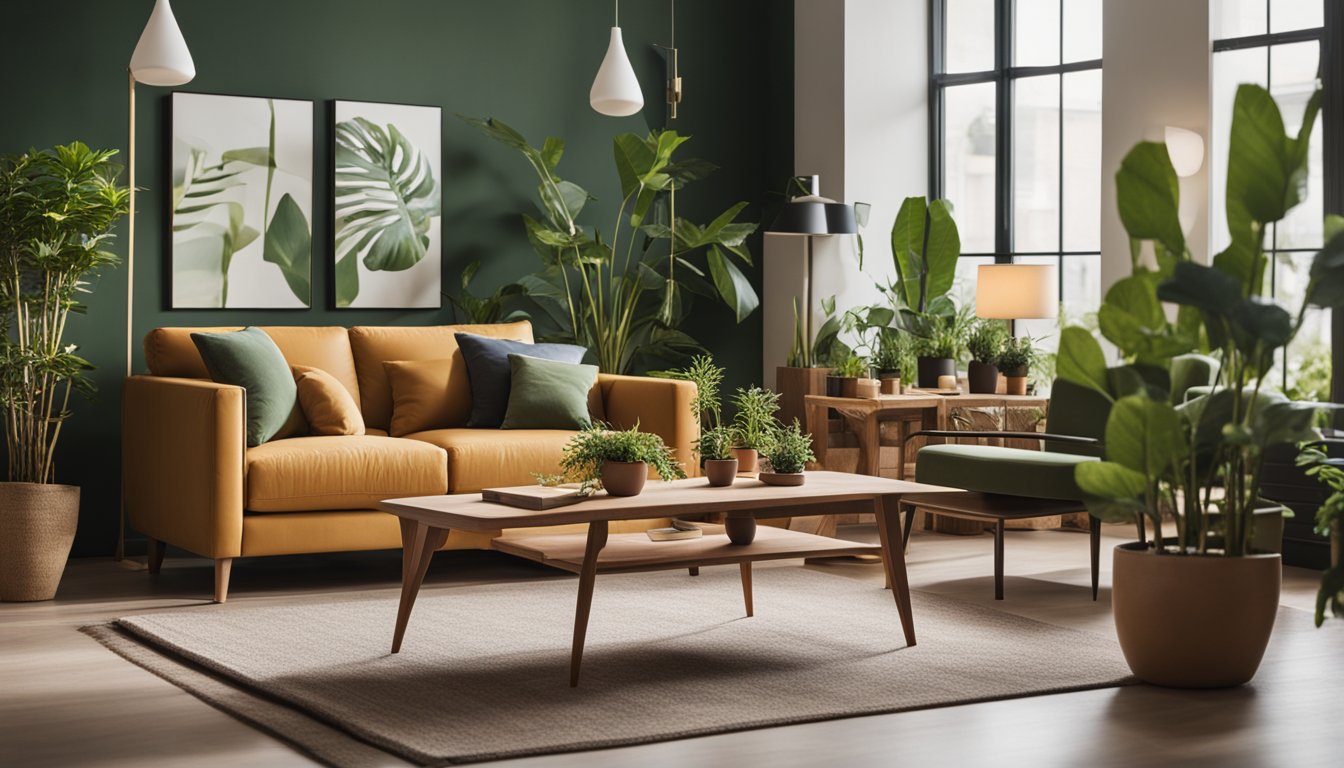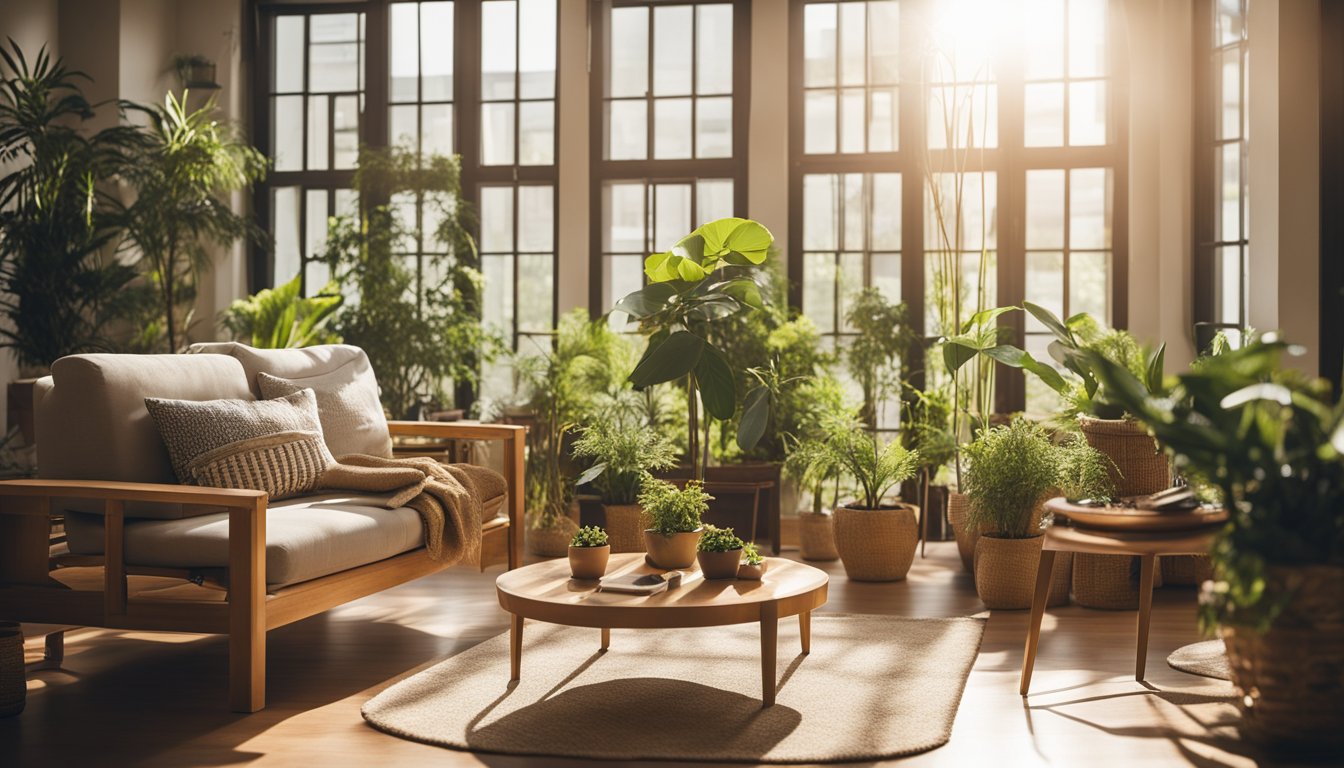Late updated: 10 Apr 2025 14:04
Written by: Sarah Hollister
Sustainable Decorating Ideas For A Greener Home: Simple Tips for Eco-Friendly Design
Creating a home that is both stylish and eco-friendly is not only possible but also incredibly rewarding. By incorporating sustainable decorating ideas, we can significantly reduce our carbon footprint while maintaining a beautiful and inviting living space. Sustainable decorating involves using materials that are renewable, reclaimed, or recycled, ensuring that each piece not only enhances our home's aesthetic but also supports a healthier planet.

Integrating eco-friendly elements like indoor plants and furniture made from bamboo or reclaimed wood can transform a home into a refreshing and environmentally conscious space. These choices not only contribute to a reduction in resource consumption but also improve indoor air quality and add natural beauty. Sustainable decor solutions encompass a range of practices, from opting for ethically sourced textiles to choosing energy-efficient lighting.
Our guide will explore practical and attainable strategies for sustainable home decorating, providing insights into materials and practices that are not just trends but meaningful lifestyle changes.
Key Takeaways
- Sustainable decor uses renewable, reclaimed, or recycled materials.
- Eco-friendly items enhance homes aesthetically and environmentally.
- Practical strategies for green decorating are accessible to all.
Principles of Sustainable Home Decor
In sustainable home decor, our focus is mainly on selecting materials that minimise environmental impact and reducing our carbon footprint through strategic decorating choices. It's essential to prioritise products and practices that contribute to a more ecologically kind home environment.
Understanding Eco-Friendly Materials
Eco-friendly materials play a crucial role in sustainable decorating. Reclaimed wood and bamboo are prime examples, providing durability without depleting natural resources. Bamboo grows rapidly and is highly renewable, making it a top choice for everything from flooring to furniture.
Additionally, materials like cork or recycled metals offer longevity and aesthetic appeal, often used in fixtures and fittings. Natural plant-based fabrics, such as organic cotton or hemp, reduce chemical use and water waste during production. These choices help bind our commitment to environmentally responsible living while ensuring decor is visually appealing and functionally supportive.
Reducing Your Carbon Footprint Through Decor
Decor choices significantly affect our carbon footprint. Upcycling and using recycled materials in furniture can drastically cut resource consumption. Opting for energy-efficient lighting, like LED bulbs, reduces electricity usage. Proper room insulation and window treatments, such as thermal curtains, provide energy-saving benefits by maintaining indoor temperatures effectively.
Furniture arrangement also impacts energy consumption by facilitating better air circulation and natural light usage. Choosing local artisans for decor purchases decreases transportation emissions while supporting sustainable business practices. By considering these factors, we not only create greener living spaces but also take active steps toward a more sustainable future.
Implementing Green Decorating Strategies

Our approach to green decorating involves selecting sustainable materials, enhancing indoor environments, and practising energy efficiency and water conservation. These strategies not only foster sustainability but also bring elegance and functionality into our homes.
Choosing Sustainable Materials for Your Home
Incorporating sustainable materials is pivotal for eco-friendly decorating. We can choose bamboo, known for its rapid growth and durability, or opt for reclaimed wood, which adds character and reduces demand for new timber. Cork flooring is another excellent choice as it is harvested from the bark of cork oak trees, allowing trees to continue growing.
A focus on recycled materials can greatly reduce resource consumption. For instance, we might use tiles made from recycled glass or countertops crafted from recycled paper composite. By prioritising quality over quantity, we ensure our home decor lasts longer, mitigating waste and reducing our carbon footprint.
Enhancing Indoor Air Quality and Natural Lighting
Improving indoor air quality and natural lighting in our homes enhances both health and energy efficiency. Placing indoor plants not only purifies air but also enriches the aesthetic. Plants such as the peace lily or spider plant are particularly effective.
Maximising the use of natural light can lessen reliance on artificial lighting. This can be achieved by using mirrors to reflect light and selecting light-coloured paint to brighten spaces. Additionally, we should consider replacing conventional bulbs with LED bulbs, which provide efficient, long-lasting illumination while consuming less energy.
Energy Efficiency and Water Conservation Tips
Energy efficiency and water conservation are paramount in sustainable home decorating. Energy-efficient lighting and appliances can significantly lower our energy bills and environmental impact. Installing a smart thermostat helps optimise heating and cooling, while properly insulating windows and doors maintains temperature with minimal energy loss.
For water conservation, consider fixtures like low-flow taps and dual-flush toilets. Rainwater harvesting systems can provide a sustainable alternative for non-potable uses. In gardening, practices such as mulching and choosing drought-resistant plants reduce water demand. These thoughtful implementations contribute to a greener home while offering practical savings.
Frequently Asked Questions

Incorporating sustainable decor into our homes can significantly reduce environmental impact. By choosing eco-friendly materials, repurposing existing items, and implementing conscientious strategies, we can transform spaces into greener environments.
How can one decorate their living room to enhance environmental sustainability?
We can choose furniture made from recycled or reclaimed wood. Opting for natural textiles like organic cotton or wool can reduce reliance on synthetic materials. Adding indoor plants is another effective way to improve air quality and enhance the room's aesthetic.
What eco-friendly materials can be utilised for home decorations?
Materials such as bamboo, cork, and reclaimed wood offer sustainable options. Natural fibres like jute, linen, and hemp are also excellent choices. These materials are renewable and often require less energy to produce.
In what ways can existing decor be upcycled to align with green principles?
Reupholstering old furniture using eco-friendly fabrics can bring new life to worn-out pieces. We might turn glass bottles into vases or use wooden crates as shelving. Creative repainting or refinishing can also transform outdated items.
What strategies are effective in reducing a home's carbon footprint through decor?
Choosing energy-efficient lighting, like LED bulbs, can make a big difference. Installing solar blinds or curtains can control indoor temperature more naturally. We should focus on minimalism to decrease clutter and energy consumption.
How does one select sustainably sourced furnishings?
We should look for furniture certifications such as the Forest Stewardship Council (FSC) label. This ensures products are responsibly sourced. It’s beneficial to purchase from local artisans to reduce transportation-related emissions.
What are the best practices for maintaining a green home through decor choices?
Regularly reassessing our decoration choices can keep our space eco-friendly. We should prioritise quality over quantity to ensure longevity. Additionally, embracing a timeless aesthetic reduces the need for frequent updates, saving resources in the long run.
